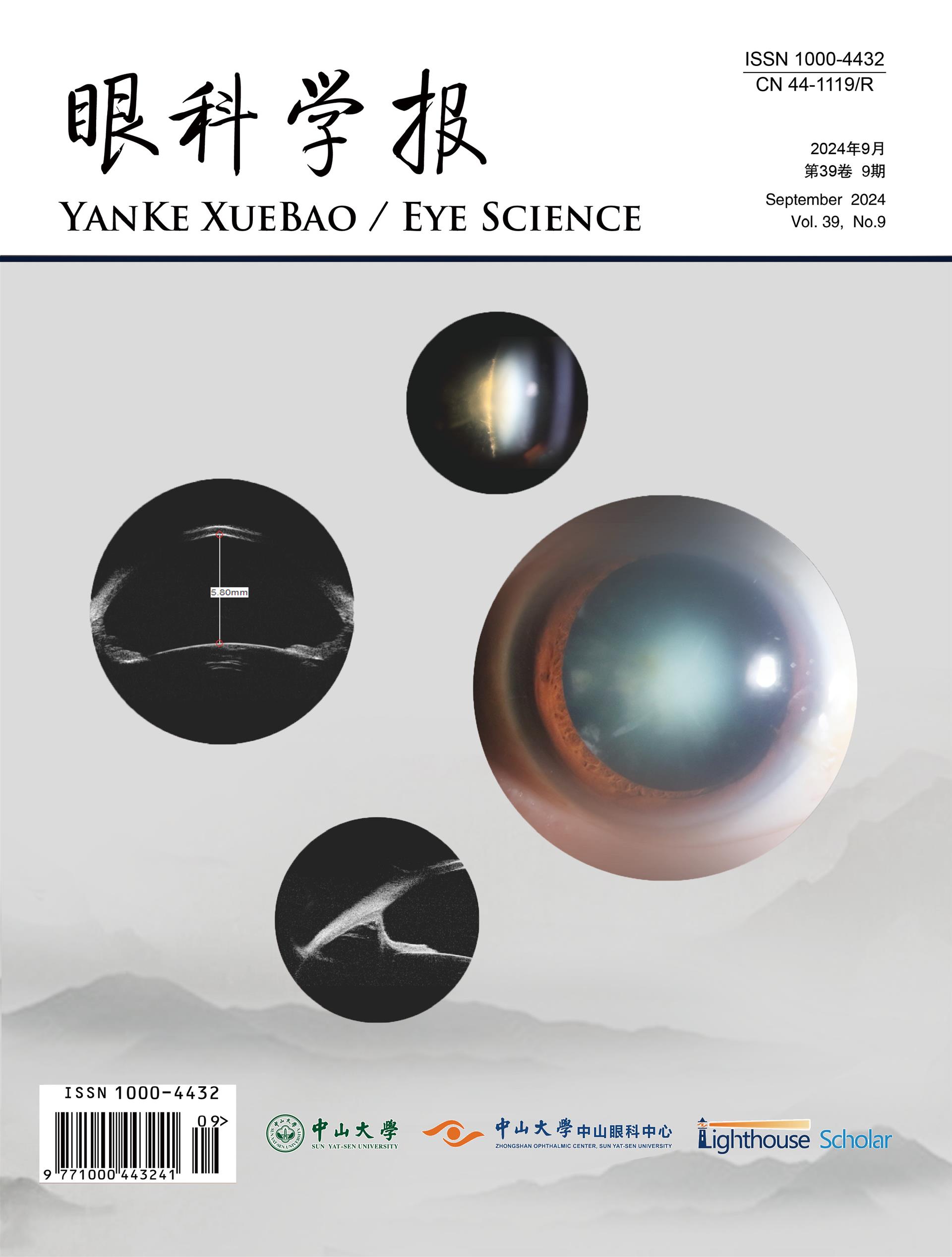Outcomes of Coaxial Micro-incision Phacoemulsification in Nanophthalmic Eyes: Report of Retrospective Case Series.
引用次数: 1
Abstract
PURPOSE The surgical risk and complication rate after cataract surgery are extremely high in patients with nanophthalmos. This study is designed to compare the visual and refractive outcomes before and after coaxial micro-incision phacoemulsification and evaluate postoperative complications. METHODS Fifty nine patients (89 eyes) with axial length (AL) < 21 mm diagnosed with nanophthalmos were enrolled in this retrospective study. All patients underwent coaxial micro-incision phacoemulsification and IOL implantation. The main outcome measures included anterior chamber depth (ACD), anterior chamber volume (ACV), anterior chamber angle (A CA), intraocular pressure (IOP) and best corrected visual acuity (BCVA). Wilcoxon signed rank test or Mann-Whitney test, and Chi-square test and logistic regression analysis were performed for statistical tests as appropriate. RESULTS The median AL was 19.63 mm. Sixty-six eyes (74.16%) had a history of surgical intervention. Postoperative ACD, ACV and ACA were increased significantly (all P < 0.001), whereas postoperative IOP was decreased significantly (P < 0.001) after surgery. Previous surgical intervention was related to a reduction in the postoperative ACD and ACA (P < 0.01), and both preoperative and postoperative IOP (P < 0.001). Postoperative BCVA was improved in 94.38% of the cases. Intraoperative complications mainly included iridoschisis (6 eyes, 6.74%). Early postoperative complications included temporary corneal edema (TCE) (23 eyes, 25.84%), anterior inflammatory response (AIR) (19 eyes, 21.35%), cystoid macular edema (CME) (14 eyes, 15.73%), and uveal effusion (4 eyes, 4.49%). Late postoperative complications included CME (8 eyes, 8.99%), uveal effusion (8 eyes, 8.99%), malignant glaucoma (2 eyes, 2.25%) and posterior capsular opacification (PCO) (10 eyes, 11.24%). The majority of complications (80%) were successfully resolved by pharmacotherapy or operation. The risk of surgical complications was greater in patients with lower AL, ACD, ACV or ACA and higher nuclear hardness or mean keratometry (Km). CONCLUSION With reasonable preoperative management, prudent selection of the lens, rigorous surgical technique and unerring cognition of potential complications, coaxial microincision phacoemulsification lens surgery can be performed in patients with nanophthalmos and yield favorable outcomes and a low incidence of complications.纳米眼同轴微切口超声乳化术的疗效:回顾性病例系列报告。
目的纳米眼白内障术后手术风险高,并发症发生率高。本研究旨在比较同轴微切口超声乳化术前后的视力和屈光效果,并评估术后并发症。方法对59例(89只眼)轴长< 21 mm的纳米眼进行回顾性研究。所有患者均行同轴微切口超声乳化术及人工晶状体植入术。主要观察指标包括前房深度(ACD)、前房容积(ACV)、前房角(A CA)、眼压(IOP)和最佳矫正视力(BCVA)。采用Wilcoxon符号秩检验或Mann-Whitney检验,并酌情采用卡方检验和logistic回归分析进行统计学检验。结果中位AL为19.63 mm。66只眼(74.16%)有手术史。术后ACD、ACV、ACA明显升高(P < 0.001), IOP明显降低(P < 0.001)。既往手术干预与术后ACD和ACA的降低(P < 0.01)以及术前和术后IOP的降低(P < 0.001)有关。术后BCVA改善率为94.38%。术中并发症以虹膜裂为主(6眼,6.74%)。术后早期并发症包括暂时性角膜水肿(TCE) 23眼(25.84%)、前侧炎症反应(AIR) 19眼(21.35%)、黄斑囊样水肿(CME) 14眼(15.73%)、葡萄膜积液(4眼,4.49%)。术后后期并发症包括CME(8眼,8.99%)、葡萄膜积液(8眼,8.99%)、恶性青光眼(2眼,2.25%)、后囊膜混浊(PCO)(10眼,11.24%)。大多数并发症(80%)通过药物治疗或手术成功解决。AL、ACD、ACV或ACA较低、核硬度或平均角膜度数(Km)较高的患者发生手术并发症的风险较大。结论合理的术前管理、谨慎的晶状体选择、严谨的手术技术以及对潜在并发症的正确认识,可使纳米眼患者行同轴微切口晶状体超声乳化手术,效果良好,并发症发生率低。
本文章由计算机程序翻译,如有差异,请以英文原文为准。
求助全文
约1分钟内获得全文
求助全文
来源期刊
自引率
0.00%
发文量
1312
期刊介绍:
Eye science was founded in 1985. It is a national medical journal supervised by the Ministry of Education of the People's Republic of China, sponsored by Sun Yat-sen University, and hosted by Sun Yat-sen University Zhongshan Eye Center (in October 2020, it was changed from a quarterly to a monthly, with the publication number: ISSN: 1000-4432; CN: 44-1119/R). It is edited by Ge Jian, former dean of Sun Yat-sen University Zhongshan Eye Center, Liu Yizhi, director and dean of Sun Yat-sen University Zhongshan Eye Center, and Lin Haotian, deputy director of Sun Yat-sen University Zhongshan Eye Center, as executive editor. It mainly reports on new developments and trends in the field of ophthalmology at home and abroad, focusing on basic research in ophthalmology, clinical experience, and theoretical knowledge and technical operations related to epidemiology. It has been included in important databases at home and abroad, such as Chemical Abstract (CA), China Journal Full-text Database (CNKI), China Core Journals (Selection) Database (Wanfang), and Chinese Science and Technology Journal Database (VIP).

 求助内容:
求助内容: 应助结果提醒方式:
应助结果提醒方式:


